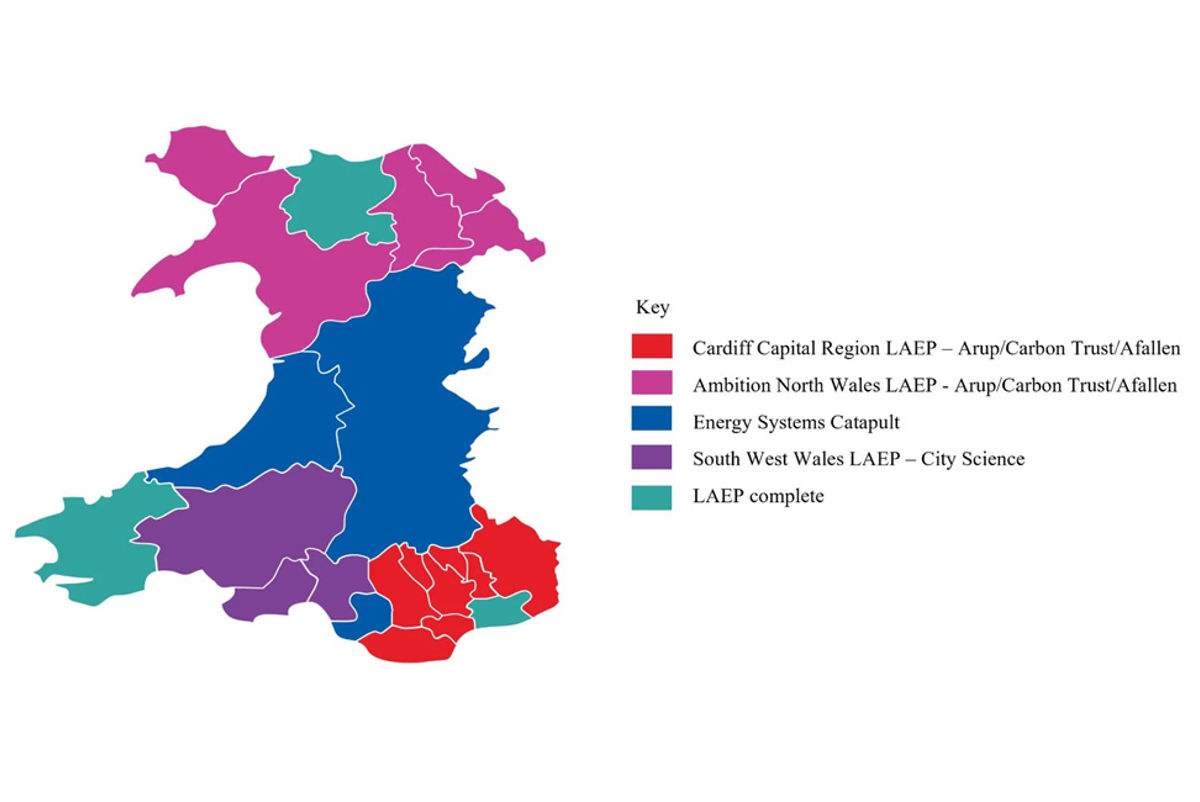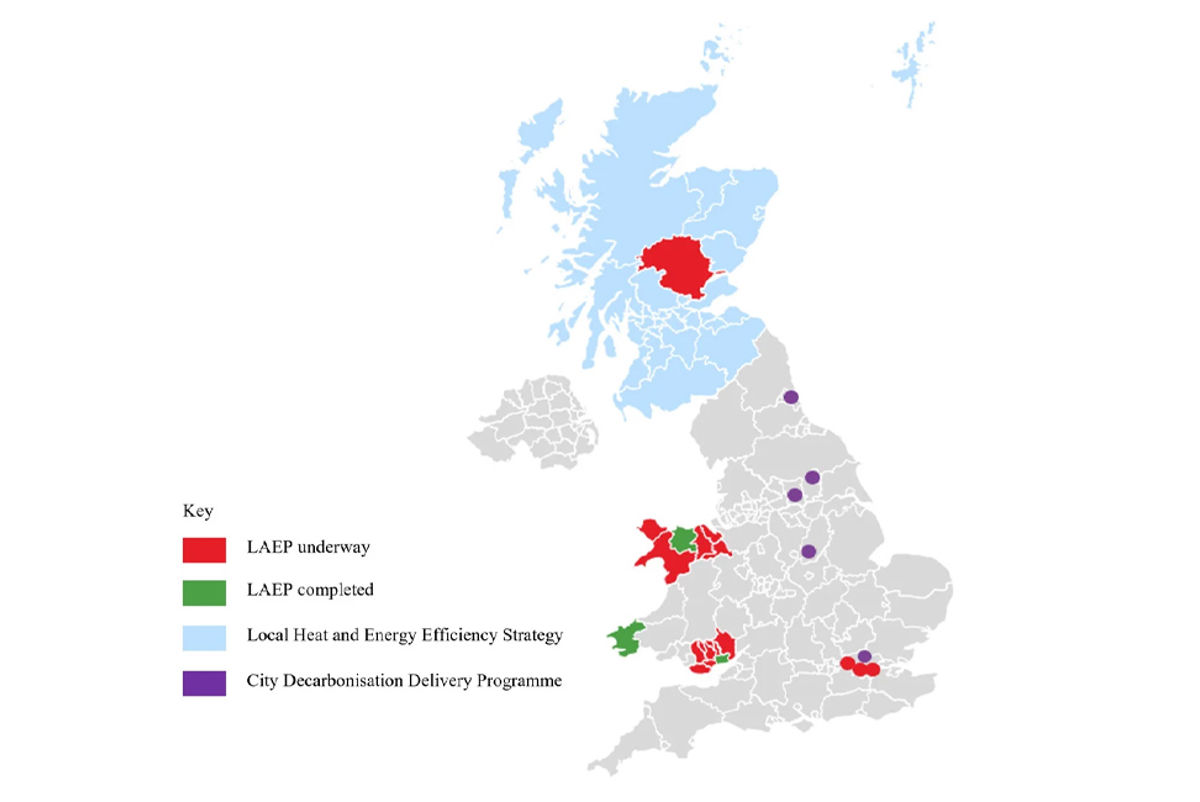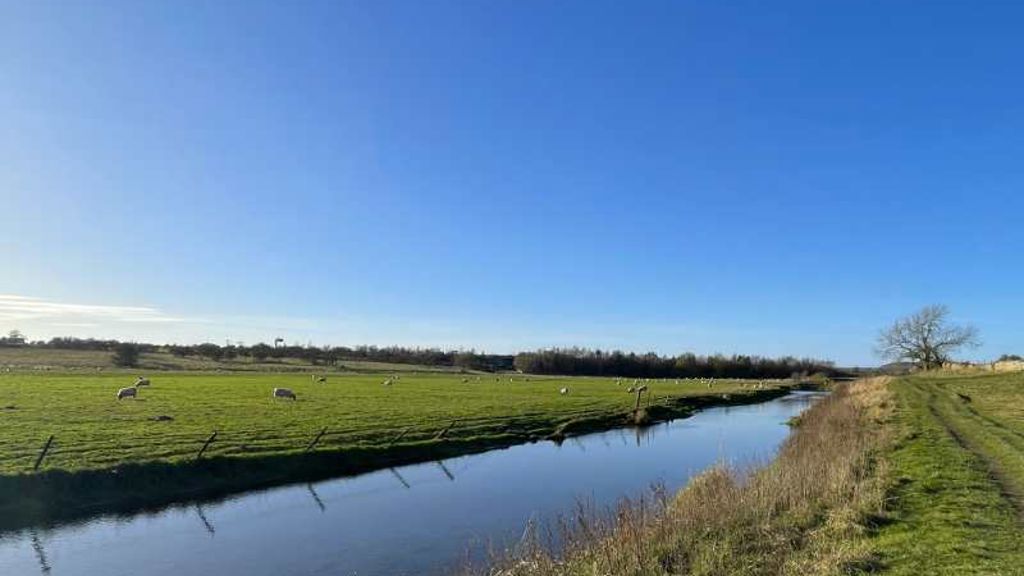Wales has a target of reaching net zero by 2050 through an ambitious strategy that would see the nation eliminate 63% of emissions by 2030. As part of this strategy, the Welsh Government committed to a policy that includes Local Area Energy Planning (LAEP) processes within each of the nation’s 22 local authority areas, funded nationally but led and developed at the local level.
A LAEP is a tailored process that addresses the whole of a local area’s energy system with a broad range of stakeholders, resulting in a plan with buy-in at a local level, and an organisational structure ready to implement that plan.
After Arup created three LAEPs in 2021-22, including a pilot in Pembrokeshire, Cardiff Capital Region (CCR) and Ambition North Wales (ANW) contracted us to develop 13 LAEPs for local authorities in their regions (8 in CCR and 5 in ANW). The result is a pioneering programme that looks at each area individually to assess challenges and opportunities at a local level, and to also integrate the LAEPs through both public and private networks, which helps to plan changes to national infrastructure over time.
Shared methodology, tailored approach
We are constantly refining our approaches and tools for local energy planning, based on our experience working with local authorities in England, Scotland and Wales.
It begins with collecting and analysing vast amounts of data to understand the area’s energy demand and its current full energy system – with all the strengths and weaknesses therein. Our team then considers both the pathways to carbon reduction for that area and the opportunities and constraints for taking these. Throughout this process, we build meaningful engagement with stakeholders – from representatives of the local authority and energy infrastructure to community groups, business owners and transport operators.
The challenge of a LAEP is to describe a pathway to transforming the entire energy system that leads to a net zero outcome. The additional challenge in the nationwide Wales LAEP programme is to do so simultaneously across areas that differ in their urban, rural, industrial and socio-economic makeup. So, while some aspects might be somewhat repeatable – for example, retrofitting certain kinds of housing stock might be similar, no two LAEPs will be completely alike.

Some differences in the needs of the Wales LAEP local areas could be seen immediately just from data collection. For example, in Cardiff, the nation’s largest city, there are many new buildings heated by electricity, but with fewer heat pumps than expected and very little space to locate renewable energy sources in the crowded city. That means importing more power – from the grid, or by finding power from sources outside of Cardiff such as offshore wind. Meanwhile, in a sparsely populated, rural county such as Ynys Mon (Isle of Anglesey), there is far more land for placing renewable energy sources but an older building stock requiring more retrofit.
Other challenges are less obvious. Pembrokeshire, in the southwest of the country, is another sparsely populated rural area with plenty of land and coastline for placing renewable energy sources. But Pembrokeshire also gains significant employment opportunities from the oil and gas industry: working with the local authority and the area’s stakeholders immediately showed strong support for a hydrogen economy.
Building networks, building engagement
Besides meeting the challenges posed by infrastructure, geography and socio-economic factors, perhaps the most important aspect of creating a LAEP is the experience needed to build stakeholder involvement within the various constituencies. The Welsh LAEP programme has around 500 stakeholders across the two regions, from people working in energy full-time, to business, housing and fleet owners who’ve never worked with energy planning before.
To help facilitate this large number of unique stakeholders and local scenarios, we partnered with The Carbon Trust and Afallen to create a fully integrated collaborative team capable of delivering Welsh-specific plans that are ready to implement, and leaving a legacy of skilled stakeholders who understand energy and the planning process more fully than before.
Thanks to Arup, their partners, and wide-ranging engagement across multiple stakeholders, we are developing LAEPs that establish the evidence, direction and steps for implementation needed in order to address decarbonisation.
Huw Lewis
Local Area Planning Lead, Welsh Government
Deliverable plans for action
The LAEPs handed over to Welsh stakeholders include all the data and analysis necessary to provide evidence for the possible pathways as well as our recommendations for which elements of the energy system are required in each area. Near-term and longer-term action plans integrate the physical infrastructure asset requirements of the energy system with non-physical elements: the marketplace, governance and national, regional and local policy. A plan for fostering long-lasting stakeholder engagement ensures that the people involved in implementation will have the skills and understanding necessary to shepherd the projects that result in achieving net zero.
Our work in Local Area Energy Planning in the UK is unique both for the number and variety of projects delivered, from cross-borough energy planning in London to projects in Scotland and, of course, the large and pioneering programme of work in Wales.

What we delivered
-
Developing 13 LAEPs for local authorities across Wales
Get in touch with our team
Projects
Explore more climate & sustainability projects

Helping London Gatwick assess carbon emissions to drive sustainable aviation
Carbon emissions study for London Gatwick, United Kingdom

Promoting climate resilient flood defence and development through nature-based solutions
Lower Darent Riverside Strategy, United Kingdom

Wetland habitat restoration at a landscape scale
Great North Fen – Restoring the Durham Carrs, United Kingdom

Auckland’s first urban heat assessment guides climate adaptation planning
Auckland Urban Heat Assessment, New Zealand
Get in touch with us
If you'd like to speak to one of our climate experts about any of the issues raised on this page or a potential collaboration then please get in touch by completing the form.



